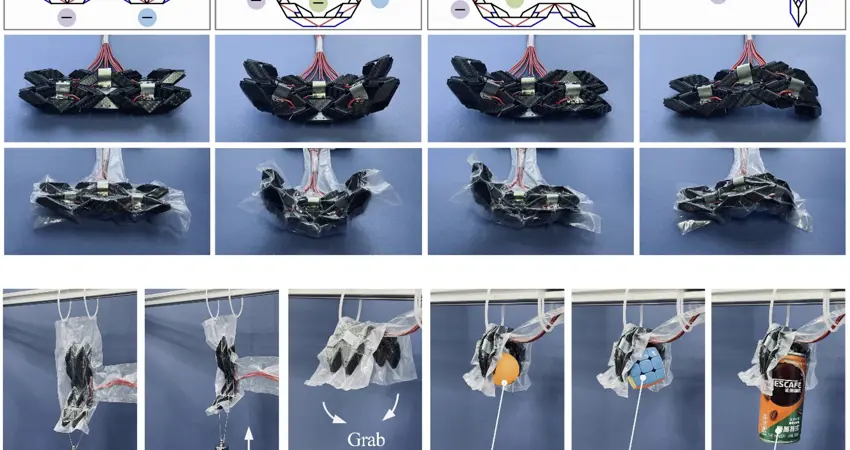31 May 2024
Origami-inspired metamorphous structures offer new levels of versatility
Researchers develop modular units that allow structures to switch between multiple configurations

Multistable robotic limb
Structures that can change shape and properties, especially ones inspired by origami, are always fascinating. These structures can morph and adapt to different needs, like those in robotics, materials, and aerospace.
 In recent research carried out by Professor Zhong You at the Department of Engineering Science and colleagues at the Harbin Institute of Technology and Tianjin University, researchers have developed a new class of origami-inspired changeable structures that can dynamically adjust their shape and mechanical properties to suit various operational requirements.
In recent research carried out by Professor Zhong You at the Department of Engineering Science and colleagues at the Harbin Institute of Technology and Tianjin University, researchers have developed a new class of origami-inspired changeable structures that can dynamically adjust their shape and mechanical properties to suit various operational requirements.
In this study, published in Science Advances, the group of researchers explored a new type of structure inspired by origami that can change its shape and how it works to meet different needs. Unlike most origami structures that are not very flexible and can be tricky to operate, this structure is made up of smaller parts that can switch between two stable positions. These parts are like tiny origami folds that can flex and change shape easily.
Made from units of two origami cells connected, the structure uses elastic creases to switch between stable shapes, making it versatile for many uses, and is both programmable and reconfigurable. To showcase this idea, the researchers created a robotic limb that can automatically adjust to lift or hold objects of different shapes and a mechanical material that can change its mechanical properties. Prototype models and rigorous theoretical analysis confirmed the feasibility of this innovative approach.
The study demonstrates how useful and adaptable this origami-inspired concept can be for all sorts of different uses. With their scalable and modular design, these innovative structures are poised to unlock new possibilities in the world of adaptive and reconfigurable systems, paving the way for a future where materials and structures can dynamically adapt to changing demands.
Professor Zhong You, co-author of the study said: ''The versatility of these origami-inspired metamorphous structures is truly remarkable. We believe this technology has the potential to revolutionise fields ranging from robotics and aerospace to smart materials and beyond."



